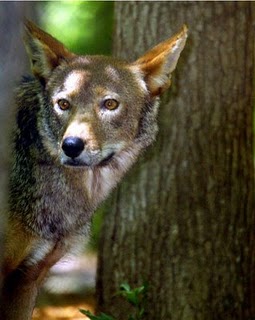In my previous post about red wolves, I discussed how the gunshot mortality on the wild population has risen significantly in the past few years. Sadly, it is believed that some of these shootings are intentional, but another reason for the increase is because juvenile red wolves are similar in size to coyotes, and leads to mistaken identity by hunter s. This problem may be amplified by the fact that eastern coyotes are larger in size than their western cousins, which in turn makes them more difficult to decipher from red wolves.
s. This problem may be amplified by the fact that eastern coyotes are larger in size than their western cousins, which in turn makes them more difficult to decipher from red wolves.
 s. This problem may be amplified by the fact that eastern coyotes are larger in size than their western cousins, which in turn makes them more difficult to decipher from red wolves.
s. This problem may be amplified by the fact that eastern coyotes are larger in size than their western cousins, which in turn makes them more difficult to decipher from red wolves.
As coyotes from the west migrated to the eastern United States, they adapted to new environments. Interestingly enough, these new populations of larger coyotes started to take on other characteristics of red wolves, such as hunting in packs. Some biologists argue that this is a characteristic that western coyotes have had for decades, but not according to the U.S. Fish and Wildlife Service (USFWS).
Coyotes were able to move in and take over empty territories as the red wolf population declined. Now the coyote population in the eastern U.S. is large and thriving, and it’s hard to believe that they were once never here. Helping red wolves to regain control of their territories is one of the biggest issues that the USFWS faces today.
Stay tuned for my next post where I discuss the threat of dog diseases and the sort of impact they can have on the wild population, as well.
I ENJOY THIS WEBSITE, IT IS VERY INFORMATIONAL.I LIVE IN TENNESSEE , THE SIZE OF THE COYOTES HERE JUST SEEMS TO KEEP GETTING BIGGER.THEY ARE GETTING OVER POPULATED AND INCREASINGLY BRAVER.ESPECIALLY IN AREAS ALONG THE RIVERS.BUT THE MOUNTAIN COYOTES TEND TO BE EVEN LARGER AND HEAVILY BONED.THEY DO LOOK MORE LIKE RED WOLVES THAN COYOTES IN MOST INSTANCES.THERE HAVE BEEN SEVERAL BLOND COYOTES SEEN IN THIS AREA.